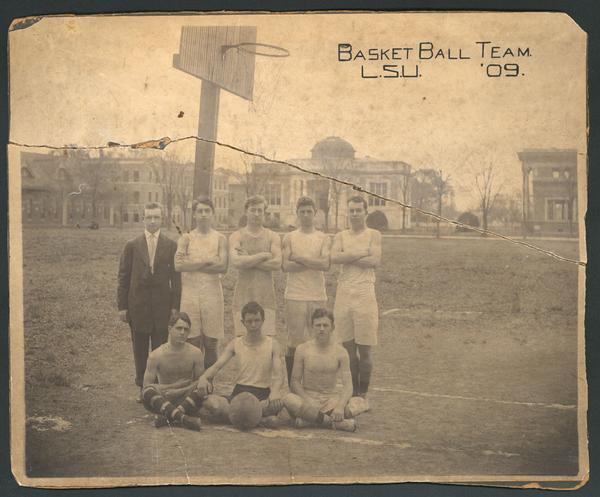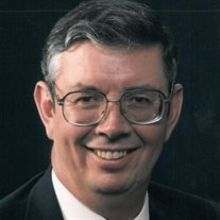These finalized finding aids are available through the Archives West finding aids database, our website, and the OSUL discovery system (a.k.a. “the catalog”). I have provided a link below to the guide in Archon. Links to the guides in Archives West and the catalog are available on the a-d slack channel.
- Six of these guides are for collections that were only minimally described and are now fully processed and described.
- One of the guides is for an essentially new collection that was formed from a substantial donation received in 2017 that was added to earlier smaller transfers received in the late 1970s and early 1980s.
- One of the guides is an update to reflect a major addition to the collection.
All of these materials will be available to researchers when SCARC resumes full reference services.
Finding aids for a new collection received since 2015:
T.J. Starker Papers, circa 1890-1996 (MSS Starker)

Starker earned an undergraduate degree in forestry from Oregon Agricultural College in 1910 and returned to campus in 1922 to assume a faculty position in the School of Forestry. At OSC, Starker worked as an instructor and researcher until 1942, when he left to pursue his private forestry and nursery business fulltime. The company formed by Starker, Starker Forests, Inc., continues to operate today as a family-owned business. Starker died in 1983.
The T.J. Starker Papers consist of materials generated and collected by alumnus, forestry professor, and timber businessman Thurman James (T.J.) Starker. This collection documents Starker’s forestry instruction and research at Oregon State College, management of a diverse range of property holdings, involvement in community and professional organizations, family life, student experience, work with the United States Forest Service, and writings on various subjects. Among the materials included in this collection are correspondence, lecture notes, meeting minutes, newspaper clippings, maps, photographs, research data, and scrapbooks.
Finding aids for collections that were only minimally described and are now fully processed and described:
Haskell C. and Sarah E. Carter Memoir, 1982 (MSS Carter)

The Haskell C. and Sarah E. Carter Memoir was written by Haskell C. Carter and documents his upbringing, college experience, marriage to Sarah Eidal, career, travels, and family. Haskell Carter graduated from Oregon Agricultural College in 1923 with a B.S. degree in mechanical engineering.
Pete Dunlop Papers, 1852-2020 (MSS Dunlop)
The Pete Dunlop Papers consists of both born digital materials and electronic copies, which were assembled by Dunlop in the course of researching and writing the book Portland Beer: Crafting the Road to Beervana. Dunlop is a Portland resident and has an active blog calledBeervana Buzz where he talks about Oregon’s micro breweries.
Florence Gradon Scrapbook, 1920-1926 (MSS Gradon)
The Florence Gradon Scrapbook was assembled by alumna Florence Gradon and is comprised of materials that document her student experience at Oregon Agricultural College. Gradon graduated from OAC in 1924 with a degree in home economics.
Heart of the Valley Homebrewers Records, 1982-2004 (MSS HOTV)
The Heart of the Valley Homebrewers Records are comprised of a wide variety of materials that document the club’s activities and outreach. The Heart of the Valley Homebrewers club was founded in Corvallis, Oregon in 1982.
William F. Herrin Papers, 1872-1910 (MSS Herrin)
The William F. Herrin Papers consist of an essay and several orations written and delivered by Herrin. William Franklin Herrin graduated from Corvallis College in 1873 with a B.S. in Agriculture.
Leander N. Liggett Papers, 1869-1873 (MSS Liggett)
The Leander N. Liggett Papers are made up of two school composition journals containing essays written by alumnus Liggett as a student at Corvallis College. Liggett attended Corvallis College from 1869 to 1873.
Finding aid for a collection with major addition:

Buena Maris Mockmore Papers, 1916-2010 (MSS Mockmore)
The Buena Maris Mockmore Papers consist of materials created and assembled by Buena Margason Maris Mockmore Steinmetz documenting her life and work, both at Oregon State College (OSC) and Iowa State University, and her work for the Manhattan Project. Mockmore earned a Master of Science degree in Home Economics at OSC in 1939, and taught family relations and child development at Oregon State until 1941, when she became Dean of Women, a position she held until 1948. In 1943, Mockmore was asked to serve as the “Director of Women’s Activities” at the Manhattan Project site in Hanford, Washington, and took a yearlong leave of absence from OSC.

































